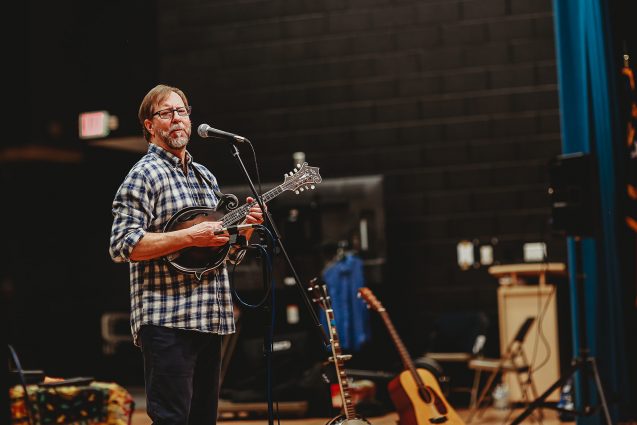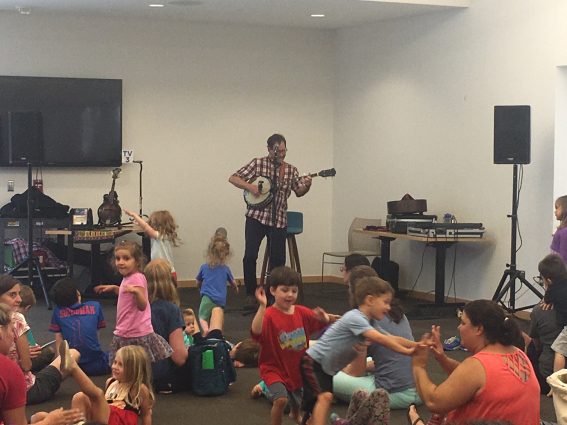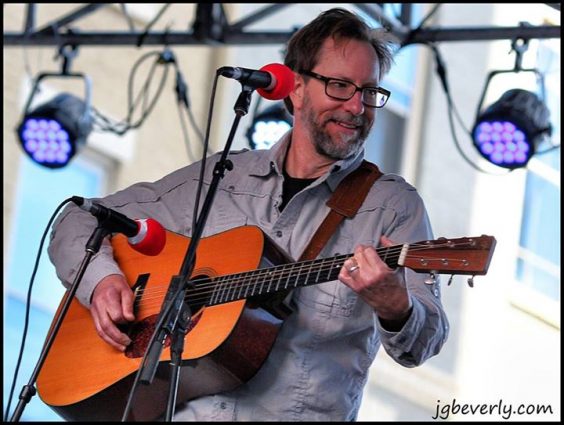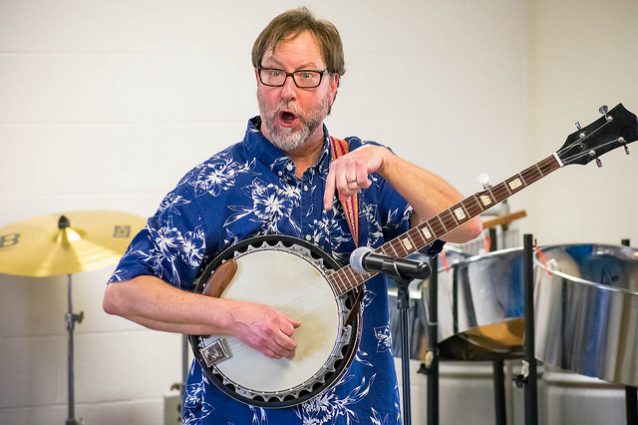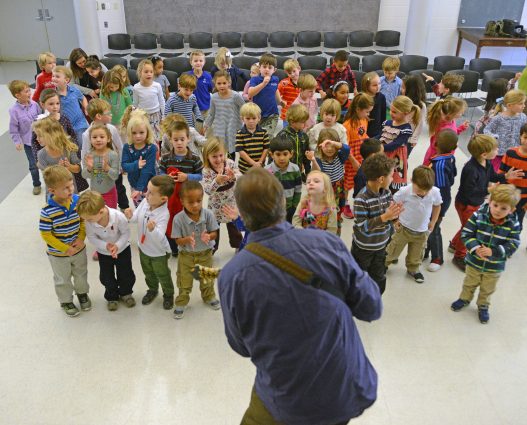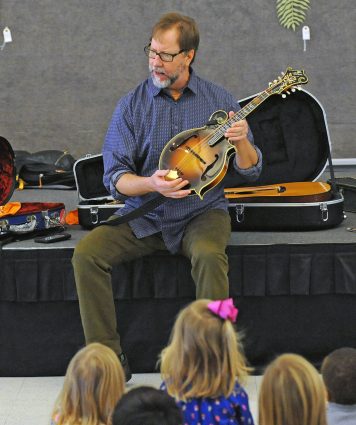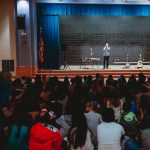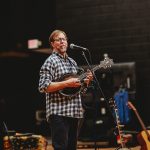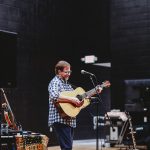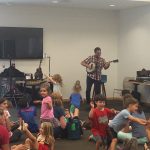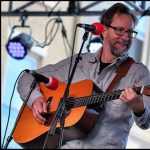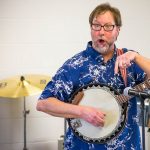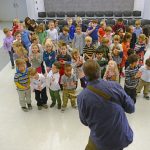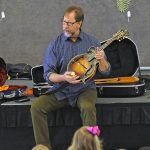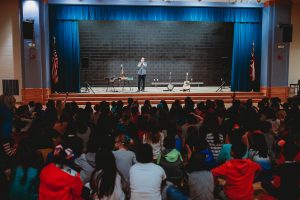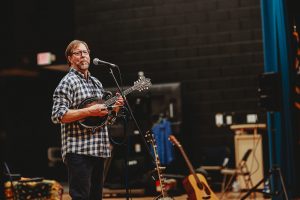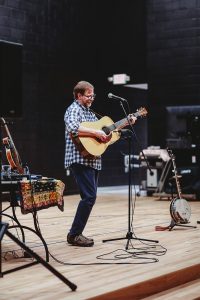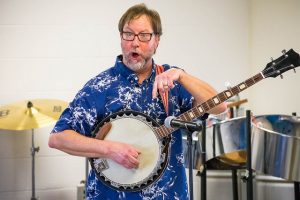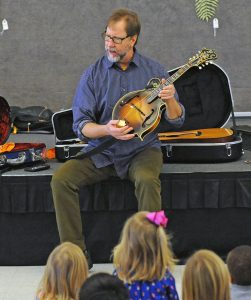Charles Pettee - Hear the Sound
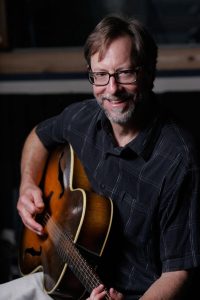
Charles Pettee, guitar and mandolin-wielding songwriter from Asheville, NC, loves sharing not only the catchy rhythms of NC Bluegrass and Folk music, but also the segregation-defying stories behind this culturally diverse tapestry of sounds. Transitioning from fronting Chapel Hill, NC’s
…
View moreEducator CONTACT INFO
SELECT A PROGRAM
Catch the Bluegrass Bug

Program Description
Come one, come all, grades prek- 2 are in for a treat when Mr. Charles takes the stage (in person OR virtually) with his guitar and brings the sounds of the North Carolina mountains to life in this fast-paced, interactive journey into the many sounds of NC Bluegrass music! Clap along to “Old Joe Clark” as Mr. Pettee stirs it up with his “tater-bug” (mandolin – 8 string instrument from
...Booking / scheduling contact
Program Detail
Year-round, on a first-come, first served basis.
Any mutually agreed upon time, day or night
10′ by 15′ performance space, one six-foot table, general stage lighting, when possible. Artist brings complete sound system included in the fee.
Gym, multi-purpose room, cafetorium, classroom, library, music special room — wherever you like!
One show, with sound system = $550.00
Two shows, (same program, or 2 different programs, with sound system), at same location = $850.00
EDUCATION STANDARDS
R6: “Assess how point of view, perspective, or purpose shapes the content and style of a text. ” Throughout his presentations, Mr. Pettee strives to offer examples of how a culture’s music and history, (be it West African, European, or American), cause the music to sound the way it does. (example: the Guitar, a Spanish musical instrument has a certain sound that supports Flamenco dance. Appalachian clog dancing calls for a different style and rhythm, which the guitar, played with a flat-pick, accomplishes nicely as well). SL4: “Present information, findings, and supporting evidence such that listeners can follow the line of reasoning and the organization, development, and style are appropriate to task, purpose, and audience.” In his presentations, Mr. Pettee demonstrates a variety of musical styles from around the world that combined in the US to provide the ingredients for NC Bluegrass music. By the end of a program or residency, many students will be able to “hear” how, for example, sounds from West Africa played on a banjo, have been carried over to the harmonica or guitar to make what are now known as “blues” music. Mr. Pettee also describes how these “blues” sounds form the basis for Bluegrass, Jazz, and Rock. L3: “Apply knowledge of language to understand how language functions in different contexts, to make effective choices for meaning or style, and to comprehend more fully when reading or listening.” Regarding music as “language” please see the SL4 and R6 above. Regarding song lyrics as language with different meanings and uses, every program contains a variety of songs, whose lyrics express either historically significant moments (e.g., the Civil War, or the Underground Railroad), tell stories (e.g., “The Lollipop Tree” song), or simply provide clever, catchy rhythms and rhymes (e.g., ‘Old Joe Clark” or “Ain’t No Bugs on Me”)
*K.ML.1.3 Execute simple rhythms using body, instruments, or voice. *K.ML.1.4 Recognize how music changes (such as dynamics and tempo). *K.ML.1.5 Illustrate a steady beat. *K.MR.1.2 Recognize contrasts in music, such as high/low pitch, loud/soft dynamics, fast/slow tempo, and same/different sections of music. *K.MR.1.3 Recognize that music is performed in a variety of settings and for a variety of purposes. *1.ML.1.3 Execute rhythmic patterns using body, instruments, or voice. *1.ML.1.4 Apply changes in dynamics and tempo when singing and playing music. *1.CR.1.1 Recognize how music is used in customs and traditions of various cultures. *2.ML.1.3 Execute extended rhythmic patterns using body, instruments, or voice. *2.MR.1.3 Illustrate audience and participant behavior appropriate for the purpose and setting that music is performed. *2.MR.1.4 Differentiate various instruments based on how their sounds are produced. *2.CR.1.1 Exemplify music representing the heritage, customs, and traditions of various cultures. Social Studies Connection: *2.C.2.1 Explain how artistic expressions of diverse cultures contribute to the community
Qualifications
PHOTOS
VIDEOS
References
1) Julia Mastropaolo | Arts Education Coordinator,
United Arts Council of Raleigh and Wake County
410 Glenwood Avenue, Suite 170 Raleigh, NC 27603
(p) 919.839.1498 ext. 210 (f) 919-839.6002
2) Ava J. Hughes, Arts Education Director
(864) 278-9693
Chapman Cultural Arts Center
200 E. Saint John Street
Spartanburg, SC 29306-5124
3)Aubrey Welfare, Director, Creative Arts in Public & Private Schools/Community (CAPS)
Durham Arts Council, Inc.
Phone: 919.560.2718 I Fax: 919.560.2725 I Web: www.durhamartscouncilcaps.com
Cancellation Policy
Artist will make every effort to reschedule program if necessary. If it is impossible to reschedule, and the program must be cancelled, 50% of fee is due, if the program is cancelled more than 30 days before the date of engagement. If cancelled within 30 days of the date of engagement, 100% of the fee is due. Cancellation fees are due no later than the originally scheduled date of engagement.


